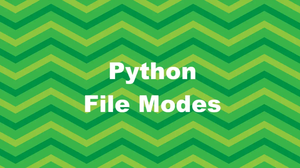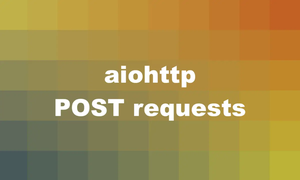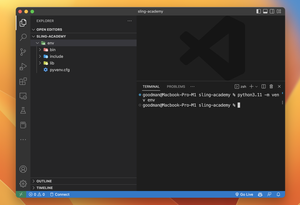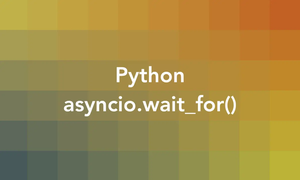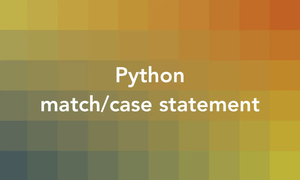Overview
In modern Python development, adopting best practices for typing can significantly improve the readability and maintainability of your code. This tutorial dives into the use of type hints in combination with the Enum class for both basic and advanced examples. By the end of this article, you’ll have a solid understanding of how to integrate these concepts into your Python projects.
Introduction to Type Hints
Introduced in Python 3.5 through PEP 484, type hints are a formal solution to statically indicate the type of a value within your Python code. They help with code analysis, linting, and understanding the intended use of variables and returns. Although Python remains a dynamically typed language, adding type hints can greatly augment development stability and performance.
What is Enum?
The Enum (Enumerated Type) is a class in Python for creating enumerations, which are a set of symbolic names bound to unique, constant values. Using enums makes your code more readable and maintainable by providing a set of predefined values that are logically related.
Basic Examples of Type Hints with Enum
Let’s start with some basic examples to show how easy it is to integrate enums and type hints into your Python projects.
from enum import Enum
from typing import List
class Color(Enum):
RED = 1
GREEN = 2
BLUE = 3
def favorite_color(colors: List[Color]) -> Color:
return colors[0]
# Usage
my_colors = [Color.RED, Color.GREEN, Color.BLUE]
print(favorite_color(my_colors))
Here, Color is an enum representing different colors, and the favorite_color function takes a list of Color enums and returns the first element. This example shows how type hints can ensure the inputs and outputs are correctly managed.
Advanced Examples
Moving onto more complex scenarios, let’s explore advanced features of Enum and how they interact with type hints.
from enum import Enum, auto
class Status(Enum):
NEW = auto()
IN_PROGRESS = auto()
COMPLETED = auto()
from typing import Union
def update_status(status: Union[Status, int]) -> None:
if isinstance(status, Status):
print(f"Status updated to {status.name}")
elif isinstance(status, int):
# Handle integer status updates
print("Integer status provided")
else:
raise ValueError("Invalid status type")
# Usage
update_status(Status.NEW)
update_status(1)
In this advanced example, the Status enum uses auto() to automatically assign values. The update_status function accepts a Status enum instance or an integer, demonstrating the use of Union in type hints to indicate multiple acceptable types.
Real-World Application
Integrating type hints and enums in a Python application, especially for API development, can indeed enhance code quality by making the code more readable, maintainable, and less prone to errors. Below is a Python code example that demonstrates how to use enums to define HTTP status codes and type hints for request handling in a Flask API.
First, ensure you have Flask installed in your environment. You can install it using pip if you haven’t already:
pip install flaskNow, let’s create a simple Flask API that uses enums for HTTP status codes and type hints for request handling:
from flask import Flask, jsonify, request
from enum import Enum, auto
from typing import Dict, Any
app = Flask(__name__)
# Define HTTP status codes using enums
class HTTPStatus(Enum):
OK = 200
BAD_REQUEST = 400
NOT_FOUND = 404
# Function to handle a get request
@app.route('/status', methods=['GET'])
def get_status() -> Tuple[Dict[str, Any], int]:
# Use the enum for the HTTP status code
return jsonify({'message': 'API is up and running'}), HTTPStatus.OK.value
# Function to handle a post request with type hints
@app.route('/data', methods=['POST'])
def post_data() -> Tuple[Dict[str, Any], int]:
data: Dict[str, Any] = request.json
if not data:
return jsonify({'error': 'No data provided'}), HTTPStatus.BAD_REQUEST.value
# Process the data...
return jsonify({'message': 'Data processed successfully'}), HTTPStatus.OK.value
if __name__ == '__main__':
app.run(debug=True)
In this example:
- We define HTTP status codes as an enum called
HTTPStatus, which makes our response handling more readable and less error-prone, as we avoid using magic numbers throughout the code. - We use type hints in the function signatures (
-> Tuple[Dict[str, Any], int]) and for the variabledatato indicate the expected types. This helps with static type checking, improves code readability, and assists in catching type-related errors during development. - For the Flask routes, we’ve created a
GETendpoint/statusthat returns the API status, and aPOSTendpoint/datathat would process posted data. Both endpoints use theHTTPStatusenum for specifying the HTTP response codes.
This approach leverages Python’s type hinting and enums to create more maintainable and error-resistant code, especially valuable in API development where clear communication of statuses and data types is crucial.
Conclusion
Through this tutorial, you’ve seen how combining Python’s type hints with the Enum class can streamline your codebase, making it more readable, maintainable, and robust. By adopting these practices, you’ll be well-equipped to handle both simple and complex use cases in your Python projects.

